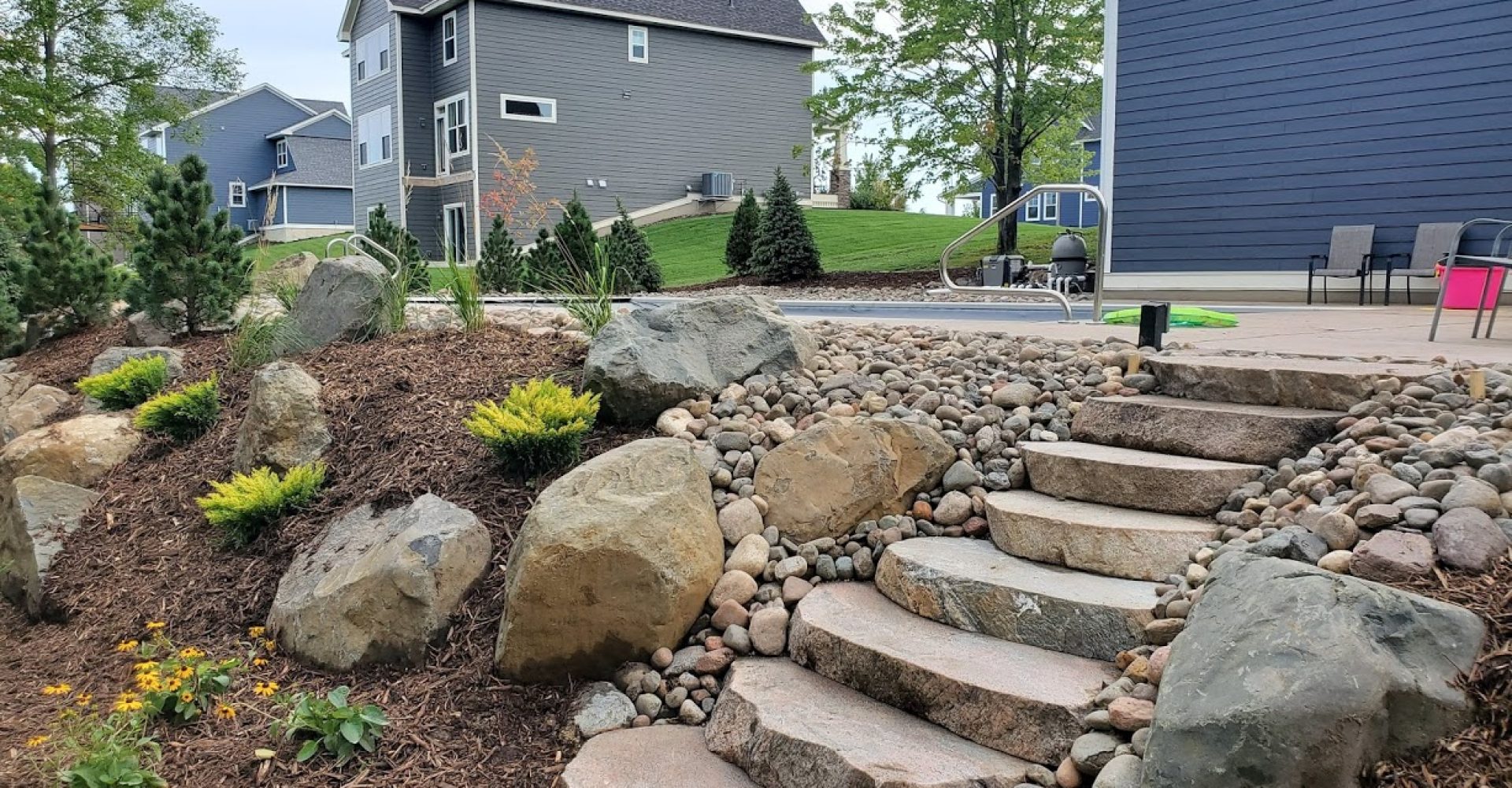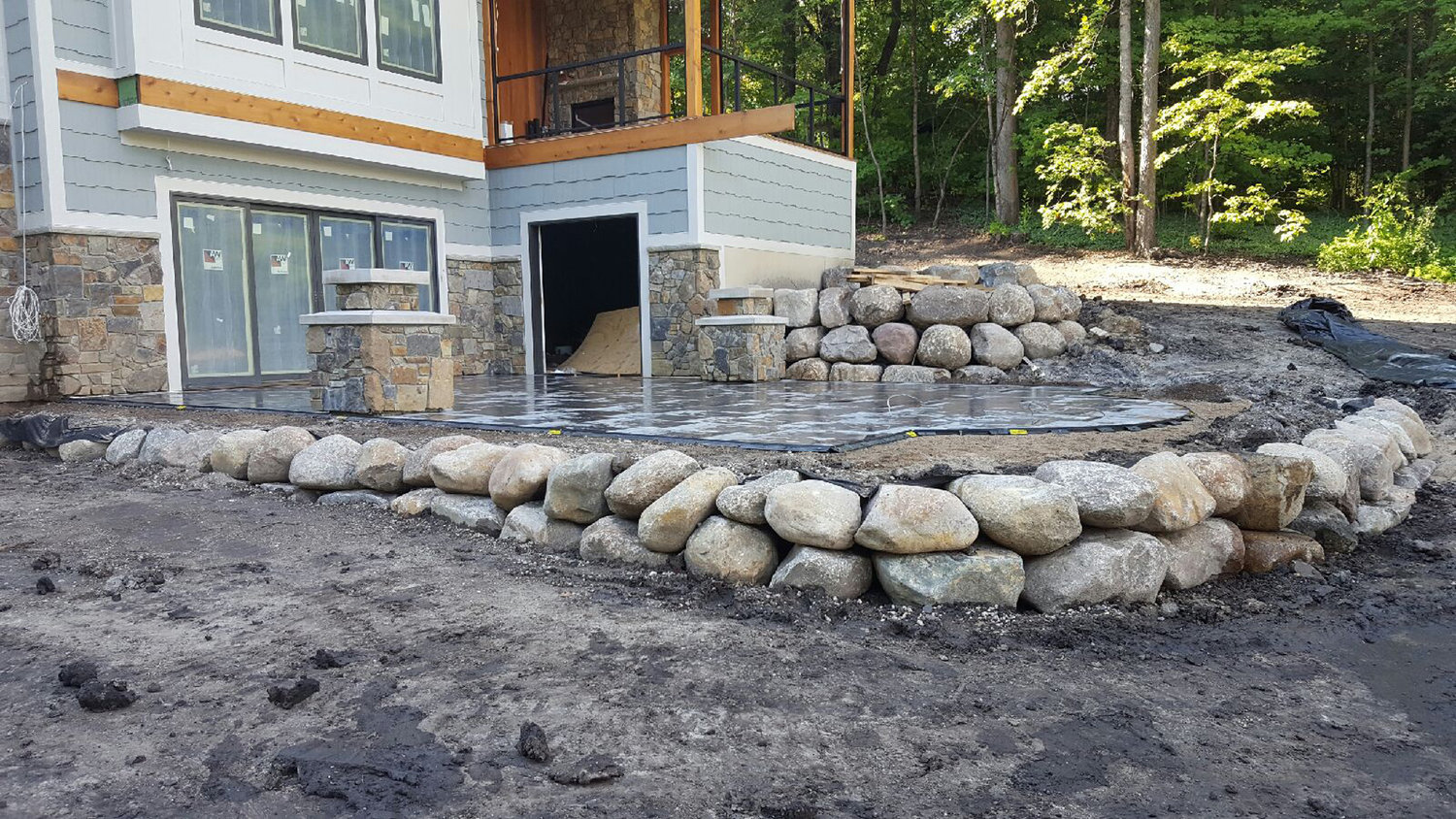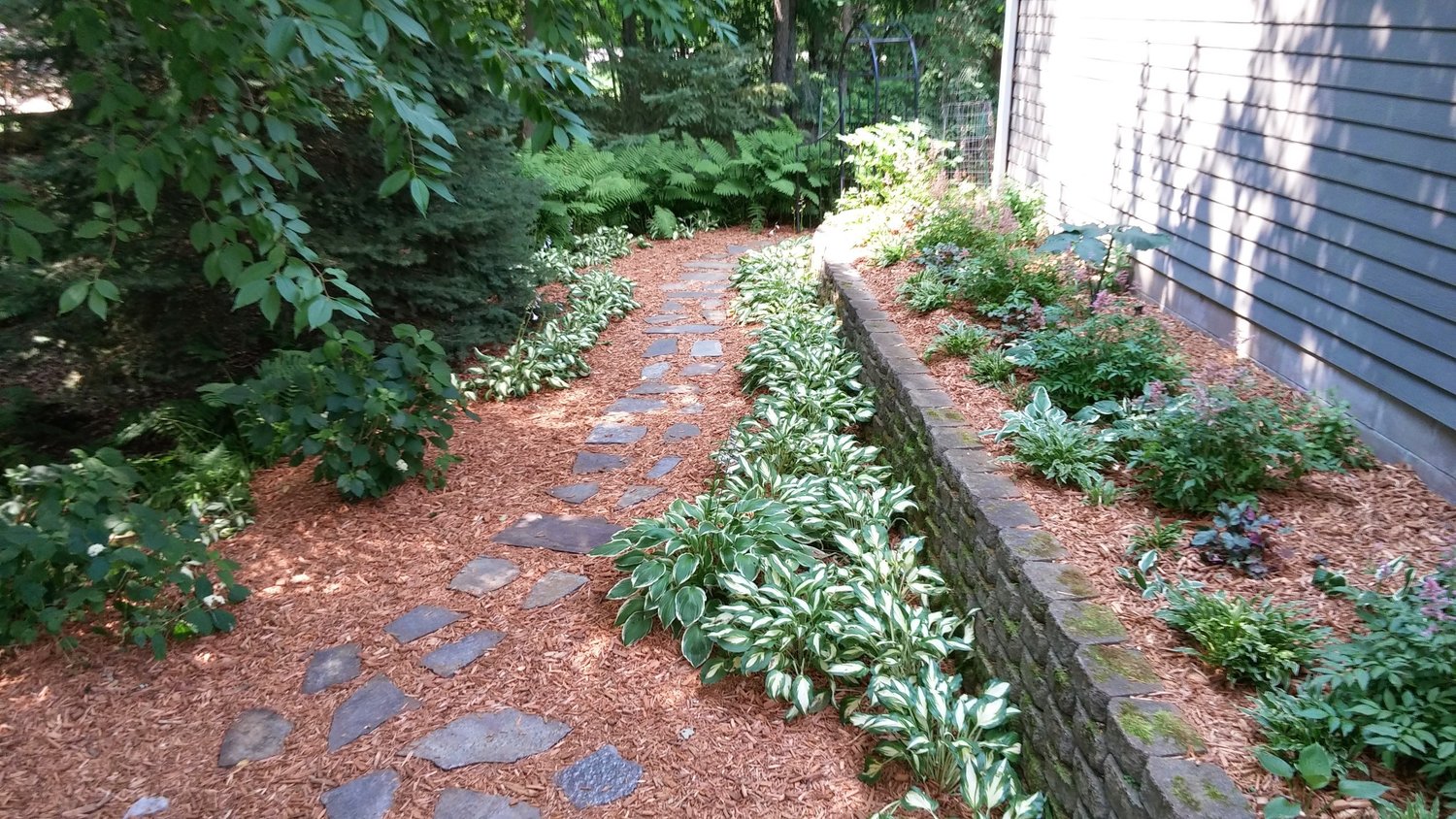
As a homeowner, you want a home with curb appeal, of course, but also an outdoor space that you can take full advantage of. This means that you do not only need a landscaping plan, you need a hardscaping plan too. Let’s dive into the ins and outs of designing a year-round hardscape plan that will give you an outdoor space you can enjoy through every season.
Outdoor hardscaping is the permanent, non-living elements that help define your usable outdoor space. These elements include patios, decks, walkways and driveways, retaining walls and edging, lighting, arbors, trellises, pergolas, gazebos, fences, benches, statues, water features, fire pits, and outdoor kitchens. They are often constructed of brick, stone, concrete, gravel, asphalt, or composite materials.
Hardscaping is designed to:
Hardscaping adds purpose, appeal, and function to your outdoor space. However, unless you live in a climate where the weather is constant year-round, you will need a seasonal hardscaping plan to extend the enjoyment and lifespan of these important elements.
The benefits of this year-round approach include installing the best materials for each season and employing the best maintenance practices to enhance the beauty, accessibility, and usability of your space all year. In the end, you want a hardscape plan that balances functionality with aesthetics.
Read More: Concrete Patio Ideas on a Budget
Any outdoor project or design is affected by an area’s climate and weather conditions. Some projects are better undertaken during certain seasons than others. Designing your hardscape plan in harmony with the seasons will make it easier and more effective.
For example, winter may not be the time to install new hardscaping features because the ground can be frozen or covered in snow, but in spring the weather warms and the ground begins to thaw, making it ideal to start installation projects that will be complete in time to enjoy them once the summer season gets underway.
On the other hand, autumn is often the perfect time to undertake winterizing and maintenance projects in preparation for winter weather conditions.
All in all, climate and the typical weather you experience in your location will also contribute to the types of hardscape materials you choose. If you live in a climate that experiences harsh winters, extreme temperatures, or violent storms, you will want to choose weather-resistant materials that can withstand the conditions in your area.
These can include concrete, brick, crushed stone or gravel, and composite materials. You may also want to consider frost-resistant pavers, which can withstand the damaging freeze-thaw cycle often experienced in colder climates and help your pavers last longer.
If you live in a climate that experiences extreme summer temperatures, you will want to choose heat-resistant materials such as granite, sandstone, limestone, concrete pavers, porous stone like travertine or flagstone, or some types of wood, including cedar or redwood.
By choosing durable materials that fit your climate, you can reduce the maintenance of your hardscape features and increase their usability and longevity. Ultimately, designing a year-round hardscape plan means understanding what hardscaping projects to tackle each season.
Spring is perfect to start hardscape projects such as decks or patios or perhaps retaining walls, and even for installing new outdoor lighting. It is also the best time to install drainage solutions, which should be a part of any hardscaping project. Spring temperatures are often ideal for heavier outdoor work. The days are warmer, but not oppressively hot as is sometimes the case with summer.
Your patio construction timeline can include up to several weeks of work. Make sure to schedule it late enough for the ground to have thawed, but not too late as to risk delays that will push completion beyond the start of summer. If you are hiring a contractor to complete the work, remember that you are not the only one wishing to do a spring hardscaping project. Contact your contractor early enough to get on their work schedule before it fills up.
Retaining walls help prevent soil erosion by keeping soil in place. They can also transform your backyard into a more usable and defined space. By installing your retaining wall in the spring, you can prepare your yard for spring planting at the same time. April and early May are usually the best months for this purpose.
Patio and retaining wall installation both require grading and soil preparation to ensure proper drainage. This process includes leveling and contouring the ground to build a proper foundation for laying the patio pavers or building the retaining wall. By creating a smooth and level surface, grading encourages water to flow in the proper direction, namely, away from your property, as well as reducing erosion and making the installed feature functional and appealing.
Lighting can contribute to both the aesthetic atmosphere of your outdoor space and also its safe use. It can also extend the time you use the space beyond daylight hours. Consider where you most need illumination, which includes considering the space’s planned use. Fixture type, power source, functionality, and your decorative preferences should also be considered. When installing lighting, always prioritize safety by following the manufacturer’s instructions and local electrical codes. If you are in doubt, hire a professional.

Read More: Spring Lawn Care Tips: Let The Grass Be Greener In Your Yard
As summer rolls around, shade and the full use of your outdoor space become priorities. This is also the best time for projects such as pergola installation or other summer shade structures. If you have been dreaming of an outdoor kitchen, then summer is a perfect time for outdoor kitchen planning and installation too.
A pergola is a sturdy outdoor structure with columns or posts that support an overhead roof created by lattice, beams, or rafters. This overhang is then often used as a structure to support the growth of vines or other climbing plants that offer shade and aesthetic appeal. Other shade structures include awnings, gazebos, or canopies.
Overall, sunshade structures are meant to manage the sun exposure in your backyard, making it a more pleasant place during hotter temperatures. Strategically placing these structures in areas that receive the most direct sunlight and combining them with shade trees and water features can make your outdoor space an enjoyable summer oasis.
Read More: Summer Landscaping Ideas That Will Transform Your Garden
Fall projects have two objectives:
One way to extend the use of your outdoor space in the fall months is by installing and using a fire pit. This can include either a permanent fire pit structure or building a patio area that can safely house a less permanent fire pit unit.
As far as preparation goes, now is the time to strengthen your retaining walls and landscaping edging before winter sets in. Winter’s colder and more inclement weather can add wear and tear to these structures. By strengthening them and taking care of any small cracks or damage can help them survive these harsher conditions.
Fall is also a good time for driveway maintenance, such as repaving, sealing, or replacement as driveways can also deteriorate quicker under harsh winter weather. Taking these maintenance steps during the autumn months can fortify your driveway for the winter season ahead.

Winter is the time for your garden to go dormant. It is also a time to winter-proof hardscaping elements in your yard. This includes:
Winter is also a time to plan for next season and decorate your indoor elements to complement your outdoor spaces.
Keeping up with seasonal maintenance prevents damage and increases the durability of your hardscaping. Understanding the pitfalls and joys of each season and designing your hardscape plan with maintenance year-round will ensure your backyard remains attractive and functional for many years. Create your own custom seasonal plan that fits your outdoor lifestyle. For help in making a plan that enhances the look and feel of your yard, contact the experts at Tracer Pool and Landscape.